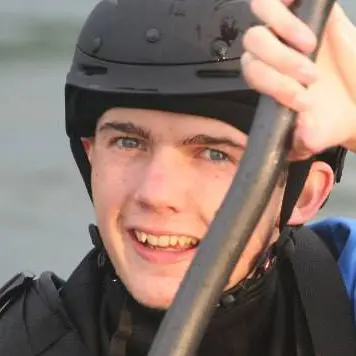Through the cloud a large dark shadow appears in the distance. I look at Blake and ask him, “Could that be it?” We both wait with anticipation, fizzing with excitement, and eyes fixed on the horizon. As we near, it becomes apparent that what we are looking at isn’t just a shadow but the towering cliff faces of the southernmost continent, the final frontier, the end of the world, the frozen planet, ANTARCTICA!
The closer we get, more and more of the details start to reveal themselves through the clouds – massive glaciers run down the valleys to the ocean, massive mountain ranges extend as far as the eye can see and the tops blend into the clouds. The ocean’s surface is made up of slushy like ice or “ice pancakes”. There’s a scatter of icebergs – some of the biggest we have seen so far, freshly broken off the ice sheet. Then, as we round the headland into the entrance of Terra Nova Bay on the western side of the Ross Sea, something amazing happens. All of the cloud rolls out perfectly in synch with us coming in, the sun shines down, the sea is flat as glass and the whole coastline is revealed in all of its beauty. A massive volcano seemingly appears out of nowhere as it is revealed from the cloud. Underneath it lies the German Antarctic base, and on the other side of the bay the Italian base.
The perfect weather and amazing views made it hard to remember why we had come the extra day’s travel from our demersal trawl site to the bay. We were there, not for sight-seeing, but to deploy an echosounder mooring. This will sit 400 m below the surface over the coming winter and collect data which will help scientists increase their understanding of silverfish ecology. Over winter it is unknown what goes on underneath the ice. All that is known is that once the ice has melted in spring there is an abundance of silverfish eggs and larvae in the bay. Data from the mooring will hopefully reveal whether the eggs are spawned elsewhere and accumulated under the ice or if there is a mass migration of silverfish to costal spawning sites in winter. Silverfish are a very important species in the Ross Sea, creating a link between zooplankton and top predators such as seals, penguins, seabirds, and toothfish.
After deploying the mooring we waved goodbye to the continent and have started heading northeast out of the bay. We have about nine days left to conduct scientific work before it’s time to pack up and head home. All parties onboard are happy about all of the science we have conducted so far and our remaining days should make it a very successful voyage. The plan is to hopefully get a couple more trawls done, then spend the remainder of our time back at the blue whale hotspot getting as many more photo IDs as we can. The weather forecast currently isn’t looking the best and we may have some wild weather and high winds in store over the next few days.
It was hard being so close to shore and not having the option to get on the land, but it has me more determined than ever to get back to set foot onto the continent!
Zac

Zac Penman
BLAKE NIWA Ambassador 2014


